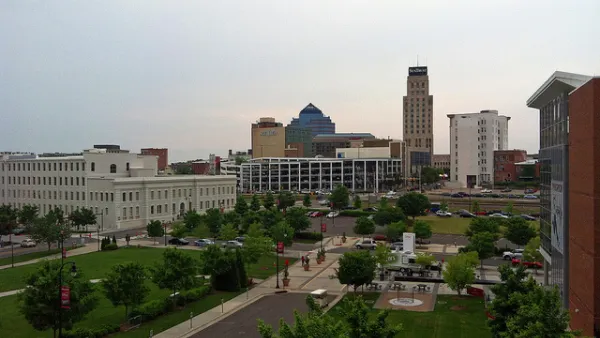Healthy children grow bigger, but once people reach maturity at about age 20 continued physical growth is harmful - it makes us fat. It is certainly possible to develop our skills, strength and knowledge, but most adults should not pursue growth as an end in itself. This also applies to communities.
Healthy children grow bigger, but once people reach maturity at about age 20 continued physical growth is harmful - it makes us fat. It is certainly possible to develop our skills, strength and knowledge, but most adults should not pursue growth as an end in itself. This also applies to communities.
It is important for planners to keep in mind the distinction between growth (getting bigger) and development (getting better). Public policies often reflect an assumption that growth is desirable, that bigger is always better. In contrast, sustainability planning tends to emphasize development over growth, that is, focusing on quality over quantity.
A recent study by Eben Fodor, The Relationship between Growth and Prosperity in 100 Largest U.S. Metropolitan Areas, provides insights to this issue. It measured the relationships between growth and economic prosperity in the 100 largest U.S. metropolitan areas. Population growth rates of each area where compared with economic indicators including per capita income, unemployment rate, and poverty rate. The results raise questions about common assumptions concerning the desirability of growth, particularly rapid growth. Some of his key findings are summarized below.
Figure 1 shows that personal income tends to be lower in faster growing metro areas. It indicates a decline of almost $2,500 in per capita income for each 1% increase in growth rate. This correlation was even larger for the 2008-2009 (i.e., the recession) time period.

Figure 2 shows the percentage change in per capita personal income between 2000 and 2009. While all MSAs showed gains in income over this period, metro areas with higher growth rates had significantly lower gains than slower-growing areas. A metro area with a stable, non-growing population experienced a 43% higher income gain than an area growing at 3% per year.

A particularly interesting finding from the statistical analysis is that the correlation between personal income and growth rates were even stronger with population growth occurring over the 1990 to 2009 time period, and stronger still for the prior 1990 to 2000 period. This indicates that the per capita income levels of a metro area may be strongly influenced by the rate of growth occurring in a prior decade. In this case, growth rates in the 1990 to 2000 period showed the strongest correlation to changes in income as recently as last year. Faster-growing metro areas during the 1990 to 2000 period had lower income growth over the following nine years, and had bigger declines in income during the 2007-09 recession.The study also found that metropolitan areas with faster population growth rates tend to have higher 2009 unemployment and poverty rates, but these relationships are not statistically significant.
Overall, the study found that the slowest-growing metro areas outperformed the fastest-growing areas in every category used in this study to reflect the prosperity of local residents. Residents of the slowest-growing metro areas averaged $8,455 more per capita in personal income than those of the fastest-growing areas. They also had lower unemployment and poverty rates. The nine-year study period captures the effects of the Great Recession, and changes from 2007 to 2009 show that faster-growing metro areas were more severely impacted.
This is not to suggest that growth is necessarily bad. It benefits some people and industries, particularly those associated with real estate, financial, and land development. However, it also imposes significant economic costs. The key message for planners and public officials is that communities benefit from true development (getting better) rather than overly-enthusiastic growth (getting bigger).
The challenge facing planners is that growth, which is quantitative, is generally much easier to measure than development, which tends to be more qualitative. We therefore need to develop practical tools for discerning true development.

Analysis: Cybertruck Fatality Rate Far Exceeds That of Ford Pinto
The Tesla Cybertruck was recalled seven times last year.

National Parks Layoffs Will Cause Communities to Lose Billions
Thousands of essential park workers were laid off this week, just before the busy spring break season.

Retro-silient?: America’s First “Eco-burb,” The Woodlands Turns 50
A master-planned community north of Houston offers lessons on green infrastructure and resilient design, but falls short of its founder’s lofty affordability and walkability goals.

Test News Post 1
This is a summary

Analysis: Cybertruck Fatality Rate Far Exceeds That of Ford Pinto
The Tesla Cybertruck was recalled seven times last year.

Test News Headline 46
Test for the image on the front page.
Urban Design for Planners 1: Software Tools
This six-course series explores essential urban design concepts using open source software and equips planners with the tools they need to participate fully in the urban design process.
Planning for Universal Design
Learn the tools for implementing Universal Design in planning regulations.
EMC Planning Group, Inc.
Planetizen
Planetizen
Mpact (formerly Rail~Volution)
Great Falls Development Authority, Inc.
HUDs Office of Policy Development and Research
NYU Wagner Graduate School of Public Service




























